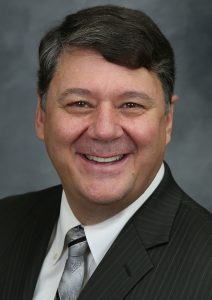Bio Huma Netics, Inc. (BHN), a leading miner and manufacturer of raw humates (humic and fulvic acids) as well as creator of soil amendments and crop nutrients based on humic technologies, has announced structural changes and expansion of its core leadership team to better align with the company’s continued growth and strategic goals. The BHN Research and Development Center has also welcomed two new members from Brazil. The newly promoted and appointed individuals stepped into their new roles effective January 2023–a milestone year for BHN as it will be celebrating its 50th anniversary.
With these new developments, the BHN executive leadership team includes Lyndon Smith, Jonathan Plehn, Justin Smith, Steve Lunt, Melanie Parkinson, Mike Boyd and Fred Nichols. [Read more…]
 Are we looking at a fertilizer shortage? Guess it depends on your definition. The availability of fertilizer isn’t a major concern in the US. It really wasn’t last year, either. As a good friend (who I consider to be among the best farmers in the country) told me last winter, “you can get it, it’s just a matter of how much you’re willing to spend for it.” That’s the issue many farmers are facing right now. How much do I invest? And do I seek alternatives to traditional NPK sources? Many of these alternatives, such as humate-based products, offer high value, improved soil health and lower overall rates/expenditures. Fertilizer prices remain historically high, but there’s not the degree of market volatility expected as there was last year. As a result, Q4 sales have moved slower than last year. But while input prices remain high, so do crop prices. That is incentivizing many farmers to chase yield. A recent survey confirms just that. Demand is strong for all fertilizer categories. 60% of farmers expect to increase micronutrient usage in 2023, 59% will increase liquid fertilizer, 51% will increase specialty fertilizers and 48% will increase yield enhancers/growth managers. Last week’s World Agricultural Supply and Demand Estimates (WASDE) report, which was bullish on the major commodity crops, should continue to carry momentum for yield chasers.
Are we looking at a fertilizer shortage? Guess it depends on your definition. The availability of fertilizer isn’t a major concern in the US. It really wasn’t last year, either. As a good friend (who I consider to be among the best farmers in the country) told me last winter, “you can get it, it’s just a matter of how much you’re willing to spend for it.” That’s the issue many farmers are facing right now. How much do I invest? And do I seek alternatives to traditional NPK sources? Many of these alternatives, such as humate-based products, offer high value, improved soil health and lower overall rates/expenditures. Fertilizer prices remain historically high, but there’s not the degree of market volatility expected as there was last year. As a result, Q4 sales have moved slower than last year. But while input prices remain high, so do crop prices. That is incentivizing many farmers to chase yield. A recent survey confirms just that. Demand is strong for all fertilizer categories. 60% of farmers expect to increase micronutrient usage in 2023, 59% will increase liquid fertilizer, 51% will increase specialty fertilizers and 48% will increase yield enhancers/growth managers. Last week’s World Agricultural Supply and Demand Estimates (WASDE) report, which was bullish on the major commodity crops, should continue to carry momentum for yield chasers.  The Agricultural Retailers Association (
The Agricultural Retailers Association ( As I begin to write, I’m reminded of an excerpt from Ode to the West Wind — “If winter comes, can spring be far behind?” Well, spring is certainly not far behind, especially for those of us working in the agriculture sector.
As I begin to write, I’m reminded of an excerpt from Ode to the West Wind — “If winter comes, can spring be far behind?” Well, spring is certainly not far behind, especially for those of us working in the agriculture sector. Every year, October 13 is marked as Global Fertilizer Day to highlight the significance and acknowledge the contribution of the fertilizer industry in feeding the world’s growing populations.
Every year, October 13 is marked as Global Fertilizer Day to highlight the significance and acknowledge the contribution of the fertilizer industry in feeding the world’s growing populations.